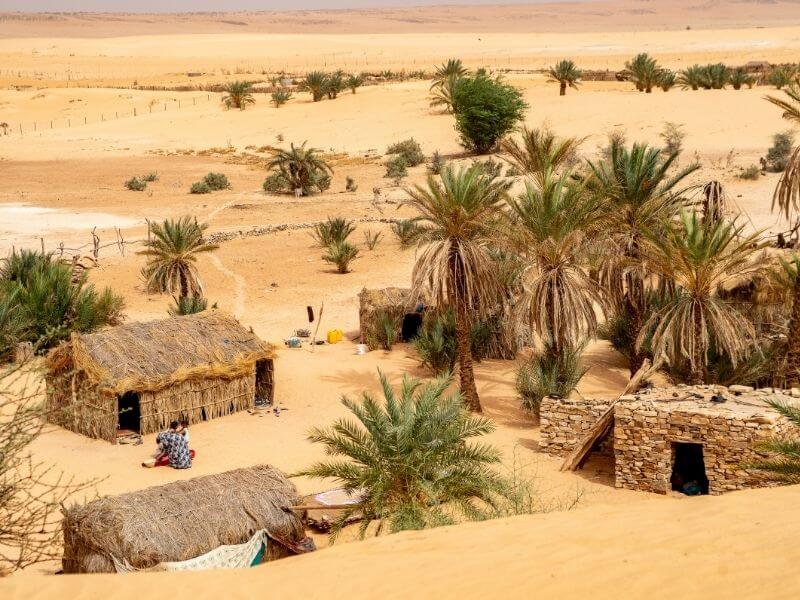Untraveled and in some way bygone, the Mauritanian Sahara is one of the most satisfying places an adventurer can explore.
Traveling to the Sahara can be as secure or as risky as you want it to be. From the organized and overly expensive trips you can book in Egypt and Morocco, to self-driving across one of the most dangerous places on earth. Curiously, Mauritania is right in the limbo of it – not as dangerous and isolated as Mali, Niger or Libya, but definitely a big step away from a Sahara trip in Morocco, Tunisia or Egypt.

My Mauritanian adventure started in Nouakchott, the country’s capital and one of the most desolated capital cities I’ve seen while traveling. Abandoned constructions next to empty areas full of trash neighboring low rise buildings and colorful shops selling food and clothing was something to see on a daily basis. Furthermore, modern vehicles are somewhat rare, as old Toyotas and in critical shaped Mercedes Benz from the 70s and 80s are the most beloved vehicles you see in this city.
And while some places off the beaten path simply live in the past, Nouakchott was not a journey to an old era. It was more the result of isolating a country for years and their attempt to thrive among West Africa.
Luckily, Nouakchott is just a quick stop to get a night of rest and embark on the next day to a journey into the Sahara.
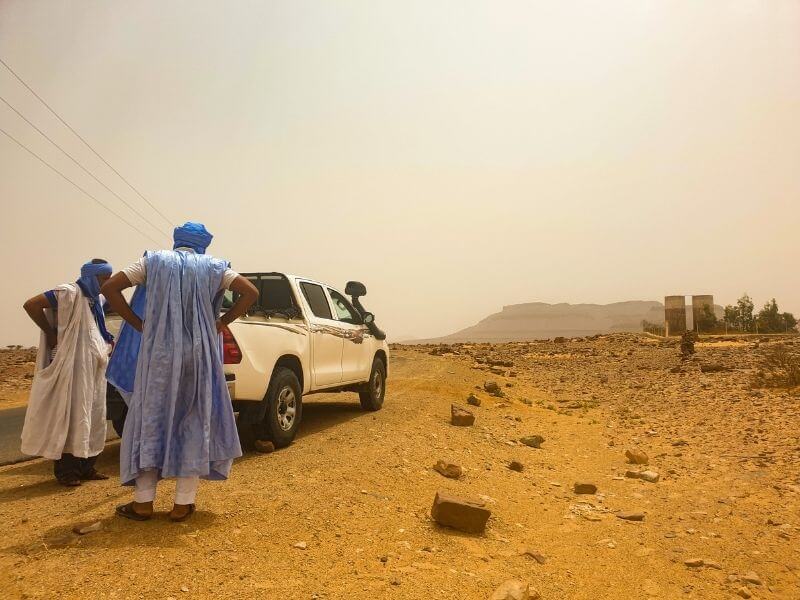
The southern gate to the Sahara
From the moment I left Nouakchott, we were in the outskirts of the Sahara. Camels roaming freely next to the highway, desolated flat landscapes until the eye can see, and one or another group of sand dunes shaping the view.
Even though the highways are in very good shape, drives in Mauritania feel long and exhausting due to the constant military checkpoints across the road and the monotony of the scenery. Passing by small villages with one or two shops give a glimpse of the life in such a remote place. The more we drove, the further away from civilization we were getting into.
Life restored a bit more when reaching Atar, a medium size town 480 km away from Nouakchott. This was the last big stop to get some variety of food, medicine and any other important needs before embarking into the deep and vast Sahara.
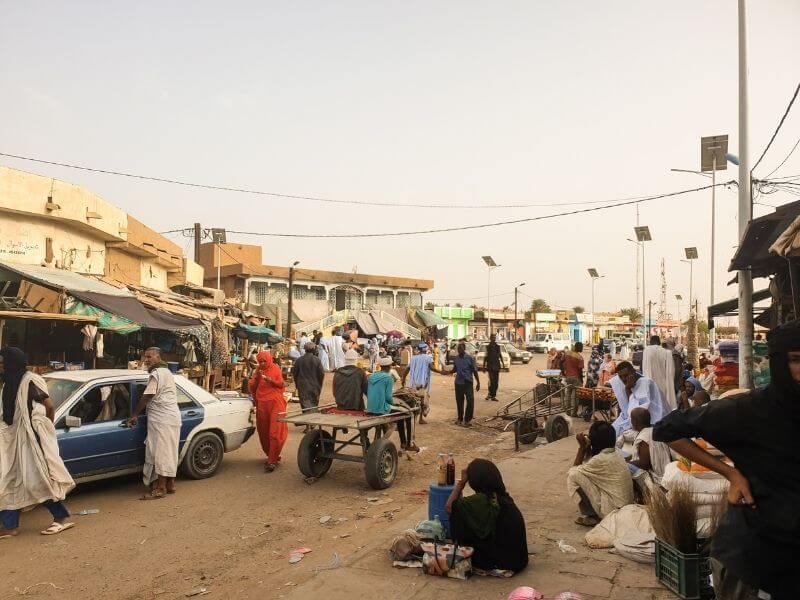
Further from Atar, the landscape changes significantly, and driving becomes slower. Dunes from each side of the road and roads in bad condition welcomed us into the desert as from one moment to another, we became the only vehicle on the road.
From Atar travelers can either go north to the town of Choum or east to the ancient villages of Chingetti and Ouadane – both areas considered an obligatory stop as a traveler in Mauritania. This is also the opportunity to properly go off-road and feel how it is to drive across dunes and don’t see anything besides 360 degrees of sand around you.
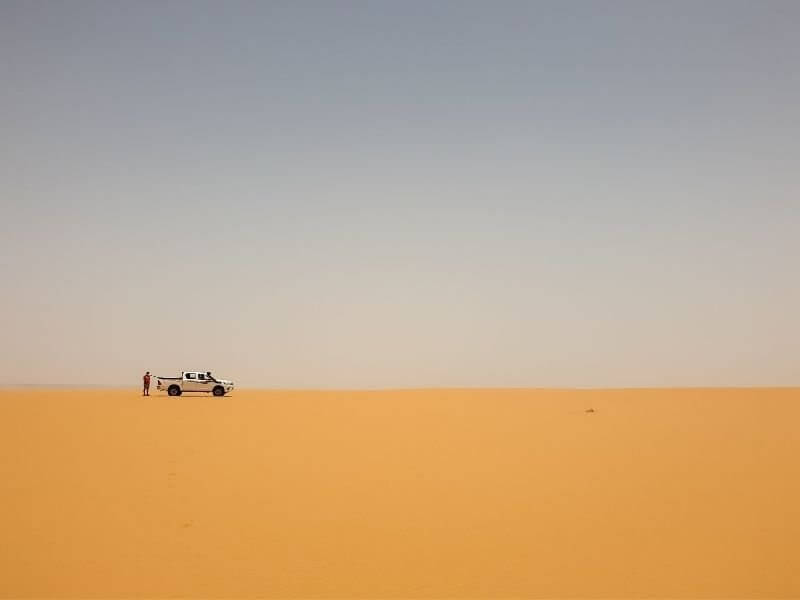
Life in the middle of the desert
Mauritania has not always been desolation and poverty. Known as one of the most important centers for trade during the Trans-Saharan route between the 8th and 12th century, some Saharan cities in Mauritania like Chingetti, Ouadane and Tidjikja were home for thousands of people from all over Africa and meeting points for nomads crossing the desert from south to north.
As traders from West Africa, Morocco and as far as Syria came to Mauritania, the country became richer in culture and a very important hub for the spread of Islam.
Read more: Best things to do in Nouakchott

The caravans in the Sahara are long time gone, but the traditions left by this melting pot are still alive. Traversing across the Sahara gave me the unique opportunity of passing by some of the few nomad communities left in the Mauritanian Sahara. Oasis in the middle of nothingness serve as source to life, as families of traders live in one of the most hostile environments on earth and are able to cultivate, farm animals and trade.
While driving around, it was possible to see large groups of camels and their owners taking a rest under the hot sun in the middle of nowhere – something unthinkable for someone who never lived in such a difficult environment.
Read more: Danakil Depression – The world’s most bizarre landscape
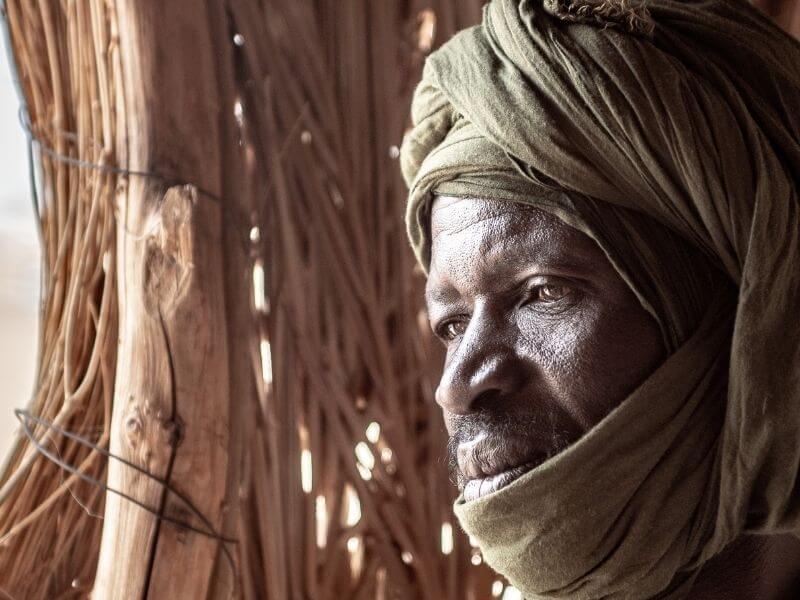
“Nomads in the Sahara walk up to 40-60 km per day”, said my tour guide Dahid, as I was exchanging headache pills for a photo with one of the nomads in this area. “Think about that Saharan nomads don’t have medicine, electricity and even sometimes potable water”, he concluded.
After spending some nights in the Sahara, I noticed how landscapes changed. The Sahara is not just a vast piece of sand in the north of Africa, but it is also communities still living with their traditions, ancient cities that can be considered museums in other parts of the world, and wildlife that had to adapt to some of the most difficult conditions in our planet. A journey into the Mauritanian Sahara is a glimpse into the basic beginnings of humanity – a place made only for survivors and an adventure to always remember.
Read more: Exploring the White and Black Desert in the Egyptian Sahara
Read more: How to travel Mauritania as a woman alone
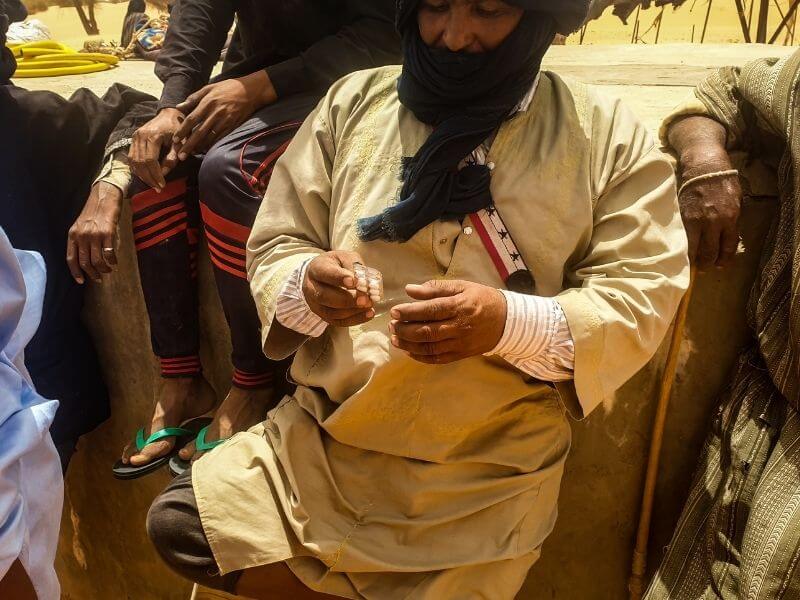
Traveling to the Mauritanian Sahara in a nutshell
An seven-night trip around Mauritania (including 3 nights in the Sahara) with a private guide starts at 2,500 EUR for two people, including an English speaking guide, 4×4 plus driver, all accommodation in basic guesthouses and food.
If a traveler decide to book everything separately, costs can be reduced significantly, but the organization can become a nightmare. Exploring the Sahara using public transportation is nearly impossible and even if you travel to Mauritania with your own vehicle, it is recommended to get a guide who supports you.
Read more: 5 extreme places to travel once in a lifetime.
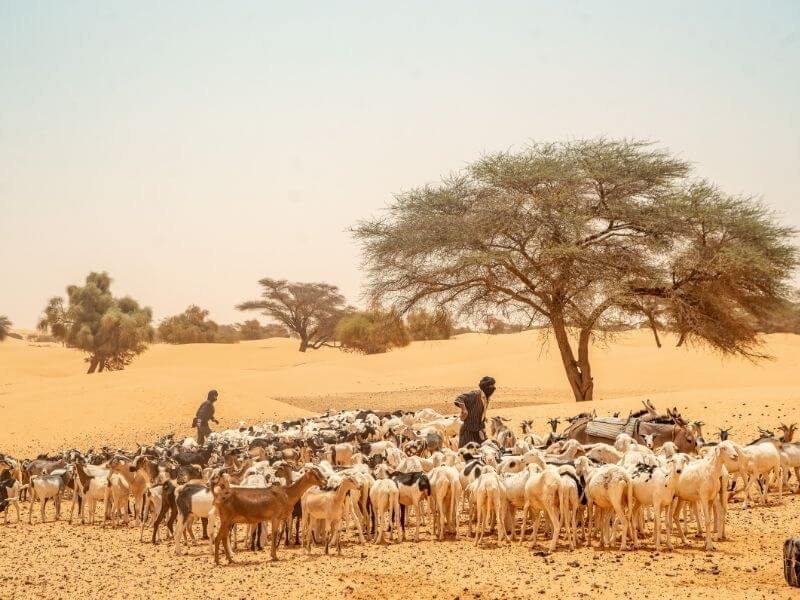
Many travelers also incline to use organized trips with European based companies. These tours are very easy to book and usually start at 2,000 EUR per person, in groups of 8-10 people.
Visas can get sorted out on arrival for most countries for 50 EUR and flights to Nouakchott start at 600 EUR return.
Read more: Traveling to Chingetti and Ouadane – Mauritania’s best kept secrets
